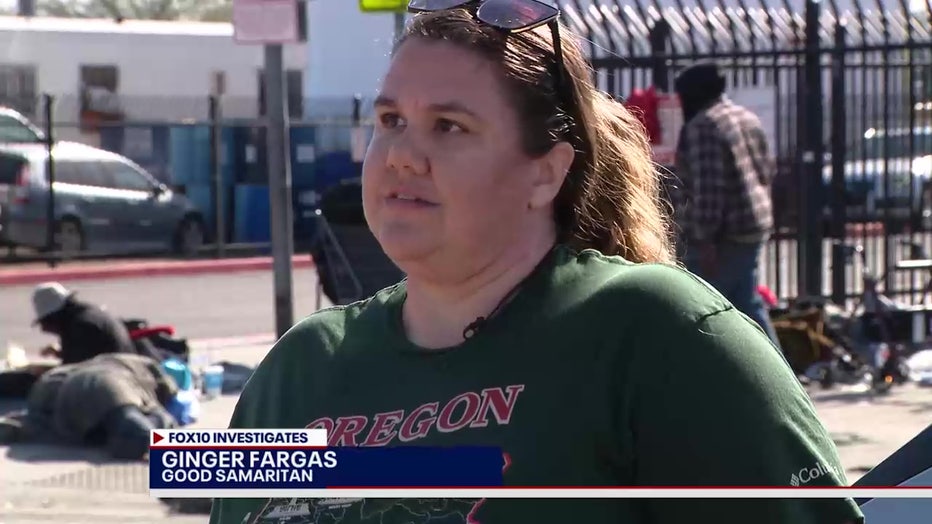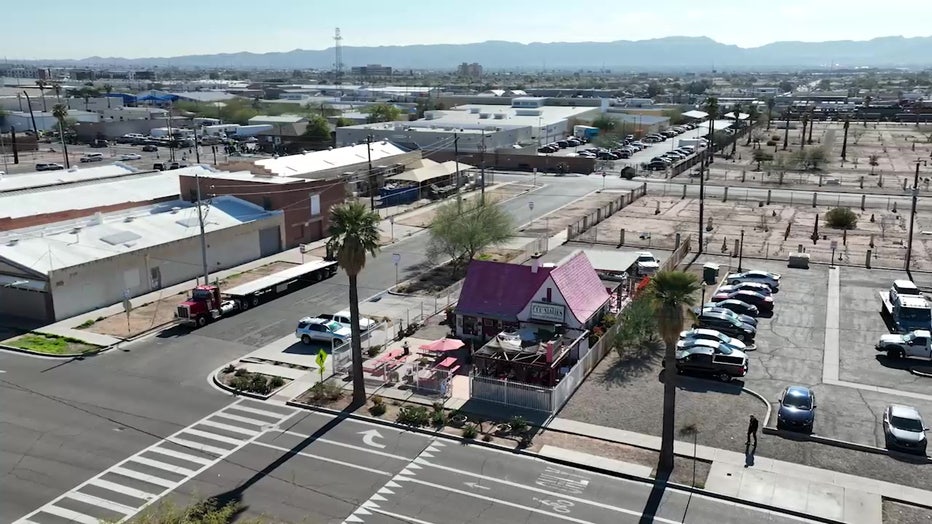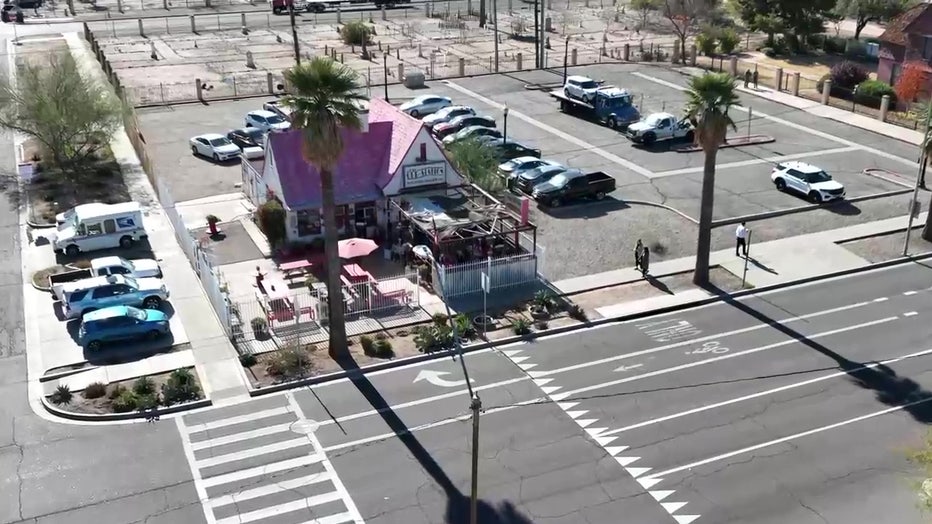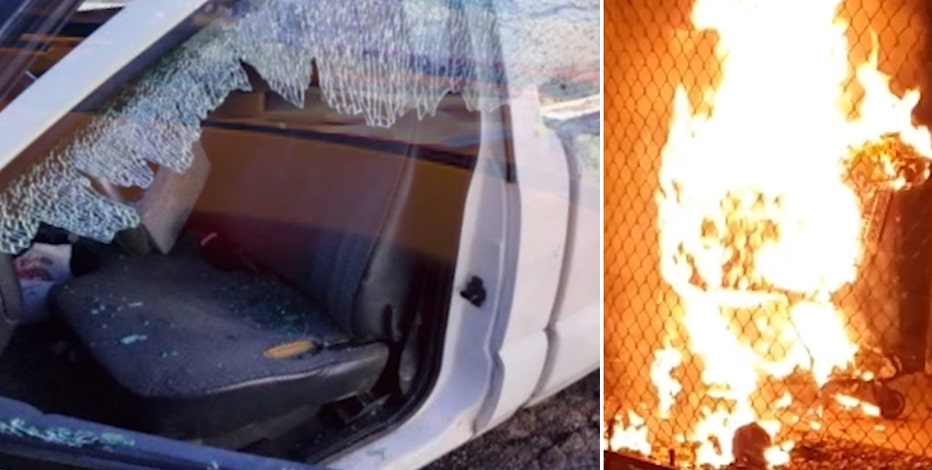Surviving ‘The Zone’: Crime drops where Phoenix’s tent city once was but homeless crisis persists
PHOENIX - It’s been nearly three months since the city of Phoenix cleared the largest homeless encampment we know as "The Zone."
At one point, more than a thousand unsheltered people made up a tent city across 15 blocks.
Nearby business owners complained about constant crime and even sued the city, winning a lawsuit that led to the clearing.
What's The Zone been like since?
We wanted to look at the time frame after the encampment was cleared to see what was different.
Services for the unsheltered community are still strained, funding is running out while residents and businesses know the clearing is not a solution.
Instead, a crisis remains.
A community of its own resides between concrete boundaries. 7th Avenue to 15th Avenue, between Jefferson and Harrison streets.
It was a hub for those experiencing homelessness, some chronically for several years.
It’s just another day as outreach workers provide food, water and clothing.
"Tonight, I’ma go to Andre’s House. That’s where I get food at," said Daniel Rodriguez. He's experiencing homelessness.
He lost his job recently and doesn’t have enough money saved up for a place to live. He’s on his own, just trying to survive another night.
"I’ve been freezing but I’ve got my own blanket. I have big blanket to keep me warm and stuff," Rodriguez said.
Ginger Fargas has been coming to The Zone weekly to help out.
"There’s people here who work nightshift at Amazon. They just can’t afford to get a place," Fargas said. "This time of the year is, what’s going to keep you warm for the longest? We get the 18-hour warming packs, we get thick socks, hats, gloves and scarves because they’re easily transportable. The drawing bags are huge because you can stuff as much in them and carry 'em on your back."

Ginger Fargas
What's been done to clear The Zone?
"It’s nice for the customers to say, ‘Wow, it looks a lot better out here. It feels a lot safer out here.’ But, they’re not here nine hours," said Joseph Faillace, owner of Old Station Sub Shop.
He and his wife Debbie Faillace own the Old Station Sub Shop.
It’s been 38 years since they opened their doors, but that’s not why we’re speaking to them.
The Faillace couple and other business owners and residents on the outskirts of The Zone sued the city of Phoenix claiming officials allowed the homeless encampment to transform into a "public nuisance."
The complaint cited drug use, defecation and crime that ran rampant in the area.
A judge ruled in favor of the plaintiffs and ordered the city to pay them $220,000. The encampment also had to be cleared by Nov. 4 of last year.
NOTE: Despite the judge's order for the payout, the Faillaces say they never made any financial gain in the case, nor did they ask for any money. The money awarded was mainly used for attorney fees and litigation.
Crews beat the deadline by a few days.
‘… We found two guns …’
According to Phoenix Police crime data, from Nov. 1, 2023, through Jan. 15 of this year, crime in The Zone has dropped by nearly 50% compared to the same time frame in 2022-23.
Theft is still the most reported crime, while aggravated assault has been cut by more than half since The Zone’s clearing.
A majority of the crimes reported are at homeless shelters.
Before the clearing, crimes mainly happened out on the streets, per city data.
Are weapons still being found in The Zone?
"We found weapons on Thursday. We found a couple of knives under the planters out front," Debbie said.
"He saw something in there and maybe he saw it shining and he said, ‘Joe, there are two knives there. What do you want me to do with them?’ I said, ‘Throw them in the garbage,’" Joseph said, referring to a conversation with an employee.
"Over 38 years, we found an unbelievable amount of weapons. We found two guns, we found all kind of machetes and knives," Debbie said.
The couple is concerned that issues will creep back up soon.
"I just think that they need to get these people into shelters where they’re protected," Joseph said.
‘There are virtually no beds available’
Clearing camps in The Zone reduced the population of unsheltered people, but the hub for homeless services is still there.
Amy Schwabenlender is the CEO of Keys to Change, formerly known as the Human Services Campus.

Amy Schwabenlender is the CEO of Keys to Change
"It feels a little bit like 2018 in that there aren’t people building structures. They aren’t attaching tents to the fences," Schwabenlender said.
There are 20 partner organizations on the Key campus, hosting a variety of services like housing, health, meals and legal resources.
It’s where Arizona’s largest homeless shelter, CASS, shelters 600 adults nightly.
The campus also has a hundred bed "sprung structure."
So, what is bed availability like?
"There are virtually no beds available. What the team attempts to do is find places more places to put mats down, which isn’t a bed. It’s literally a mat. A one-and-a-half-inch thick mat put down on the floor, so we can offer someone to be for the night," Schwabenlender said.
Outside, staff counted no more than 200 unsheltered people. That's far less than the hundreds that used to camp on the streets.
"People have had to move, which makes it harder for outreach teams to find them and keep them engaged," Schwabenlender said.
As shelter remains a challenge, Schwabenlender says $14 million in American Rescue Plan funding will run out.
The money pays for overflow and heat relief shelters, as well as bridge housing. The contracts expire by the end of the year.
"In total, across all those contracts, we’re looking at 470 people who are being sheltered or temporarily housed and when that funding ends, we don’t have another source of funding to continue those programs. That means there’s potentially 470 people that end up unsheltered," Schwabenlender said.

‘These people need to be helped’
According to the point-in-time homeless count done by the Maricopa Association of Governments, the county saw another year-to-year increase in homelessness with 9,642 people accounted for in 2023.
The unsheltered population did drop by a thousand people – from 5,029 in 2022 and 4,908 in 2023.
"My gut tells me it’s going to be another increase because we know the inflow of people into homelessness is outpacing the rate we can house people," Schwabenlender said.
Joseph looks forward to a new chapter, but the reality is, his sub shop is overshadowed by a multi-layered crisis.

"After 38 years, I want to be able to sell my business. It’s a great little business and people want to be downtown, but they don’t want to be around this stuff and these people need to be helped," he said.
As we’ve reported in the past, the city is operating the "safe outdoor space" – a structured campground at 15th Avenue and Jackson Street.
It’s a referral based on Keys to Change, Community Bridges or the city. When fully operational, it can shelter another 300 people.




